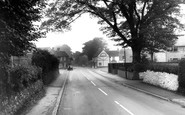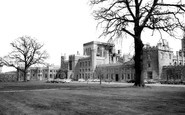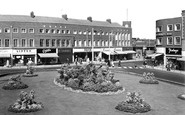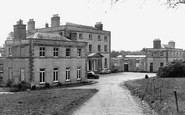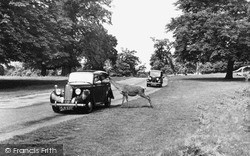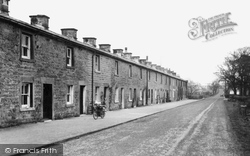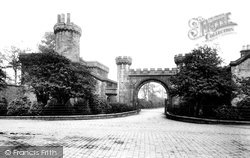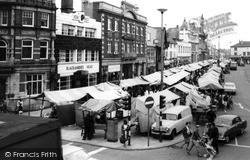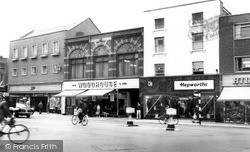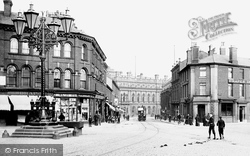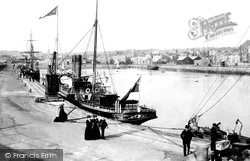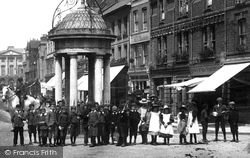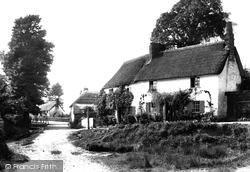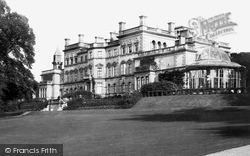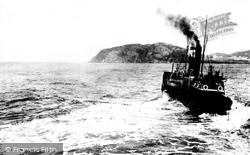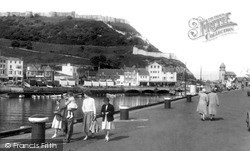Places
3 places found.
Those places high-lighted have photos. All locations may have maps, books and memories.
Photos
63 photos found. Showing results 2,041 to 63.
Maps
12 maps found.
Books
1 books found. Showing results 2,449 to 1.
Memories
7,556 memories found. Showing results 1,021 to 1,030.
Village Shop
I lived in the bungalow at the end of the spinny on West Avenue in the late 1960s and went to Highcroft School from age 4 to 5, which was an old Victorian building which always smelt of tomato soup and stood on the corner of ...Read more
A memory of Castle Bromwich in 1960 by
The Court In Diss
I lived in the Court in Diss as a 3 and 4 year old girl. My father was in the US Airforce so we moved all over the world. The Court has special memories for us. My sister Sharon was born in the house. I remember beautiful gardens, ...Read more
A memory of Diss in 1954 by
The Laws Kingennie
The Laws was a beautiful mansion-house in a perfect setting. The drive from the gardener's cottage (Mr Robb) up to the big house was a wonderful journey past mature trees, past the famous rock-gardens and lily pond, the ...Read more
A memory of Kingennie House in 1940
Our Street
Our Street was named Aston Street at the back of the Kings Arms pub in Rochdale Road. It was an amazing little street with a tripe shop and pies at the top of the street, a garage next door which housed Johnny Raffo's Ice Cream Vans, ...Read more
A memory of Collyhurst in 1949 by
Robertsons Of Forres Findhorn
I remember a couple of summer holiday's in Forres in the early 1960s. The Robertsons have lived in Forres since the mid 18th century, in various locations, Market Street, Urquart Street, High Street and Findhorn. My ...Read more
A memory of Forres by
Dont Tell Him Pike!
Staying at North Lopham back in 2002 with my friends I decided to spend the day at Bressingham Steam Museum and Gardens,where the annual 'Dad's Army' exhibition was taking place. As a fan of the TV series it was an ...Read more
A memory of Bressingham in 2002 by
Northchurch High Street
I recently started to research my family tree. I myself have been living in Northchurch for 19 years. I was very suprised to find that my grandfather was born in Cheddington and raised there, as were his siblings, ...Read more
A memory of Berkhamsted in 1900 by
Bull Ring And Market
I have just been back to Wakefield for a short break. I knew what to expect before I set off. But still don't know whose idea it was to do away with the old Bull Ring which I thought made it look more like a city. Why take ...Read more
A memory of Wakefield in 1959 by
Shute In The Early 1950s
As Anne Tilbrook, I was a pupil at Pippins and then Shute, from 1950-53. I vividly remember Feb. 6, 1952, when the girl who rang the bell for change of classes brought us the news that King George VI had died. We all cried ...Read more
A memory of Shute in 1952 by
I Remember Southall
I moved to Southall when I was 5 with my family, went to live at Cornwall Avenue and then went to Lady Margaret School, left there when I was 11 went to Dormers Wells, at 12 we moved to Trinity Road, I still went to Dormers ...Read more
A memory of Southall in 1940 by
Captions
2,471 captions found. Showing results 2,449 to 2,472.
Its surroundings are pleasant without being spectacular: 90% of Staffordshire is rural, and nowhere in the town, not even in the very centre, is one ever far from the countryside.
WE BEGIN the tour of the city by the Dean's Eye gate-house, the dropping-off point both for mod- ern tour coaches and ancient stagecoaches.
The royal connections with this park probably go back further that with other parks, beginning with Edward I (1272-1307), when the area was part of the Manor of Shene; the name was changed to Richmond
The name Corless is associated with the family who lived at Springfield House, Pilling.
The castellated entrance to Townley Hall, on the A671 Todmorden Road at Burnley Wood, was photographed when it was still a private estate.
In the 1920s the future looked very bright for Loughborough, but the Depression of the 1930s came as a cruel blow to the town.
In the 1920s the future looked very bright for Loughborough, but the Depression of the 1930s came as a cruel blow to the town.
The shops behind the big lamp in the centre of the road are interesting. Next to the draper's shop on the left is Walmsley's Stationers and Bookshop.
The A47 Leicester-Uppingham road forms one side of the roughly triangular market place; although the photograph shows, in the main, modest cottages of 17th- and 18th-century date, more impressive houses
To save time, an off-the-shelf Laird's design was chosen; the three-ship deal cost the GWR £100,000.
ST ANDREW'S Parish Church is situated in Church Street, opposite the site of the original School House.
Going back to the beginning of the 19th century, Loakes Manor together with its park was sold in August 1798 to the Right Honourable Robert Smith, Lord Carrington, a prosperous banker and friend
The situation resulted in the formation of a local Board of Health. Their headquarters, ironically, were in the same Middle Row house where the first cholera victims had died.

It was 'a handsome house … built in the modern taste, and adorned with shrubberies', when seen by the cartographer John Edwards.
ONE of the great joys of Exmouth is its beautiful setting, caught magnificently between the sea, the long Exe estuary and the wilder countryside of heath and cliff that so defines east Devon, offering
For instance, Hamaele is the Saxon name for the district of the early settlement, but by the 13th century the town was known as Hamelhamstede.
THE YEARS of decline that had marked the first part of the 1990s were decisively reversed during the last years of the old century and the early years of the new millennium.
William decided to shut this 'back gate' to his kingdom by building a royal fortress at the entrance to the valley.
While the Lanes attracted money into the city from shoppers, a second project undertaken in the 1980s was intended to provide new facilities for the local population.
he lost mansion of Deepdene, owned by Lord Francis Hope, once stood near the busy A24. The Howard family first owned the estate as far back as the middle of the 17th century.
The railway had unexpected consequences. It changed the look of the town.
on the Ouse was a far more practicable choice.
THE CURRENT fortification on this site can be traced back to around 1160. This was during the reign of Henry II, first of the Plantagenet kings.
Places (3)
Photos (63)
Memories (7556)
Books (1)
Maps (12)

